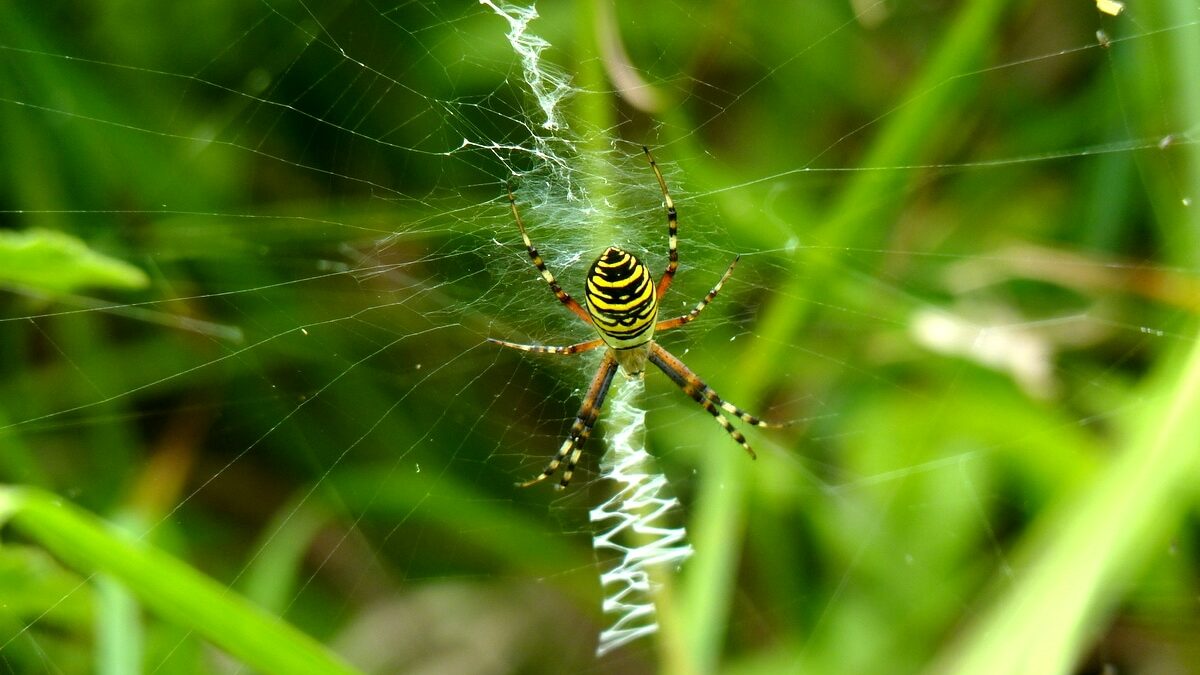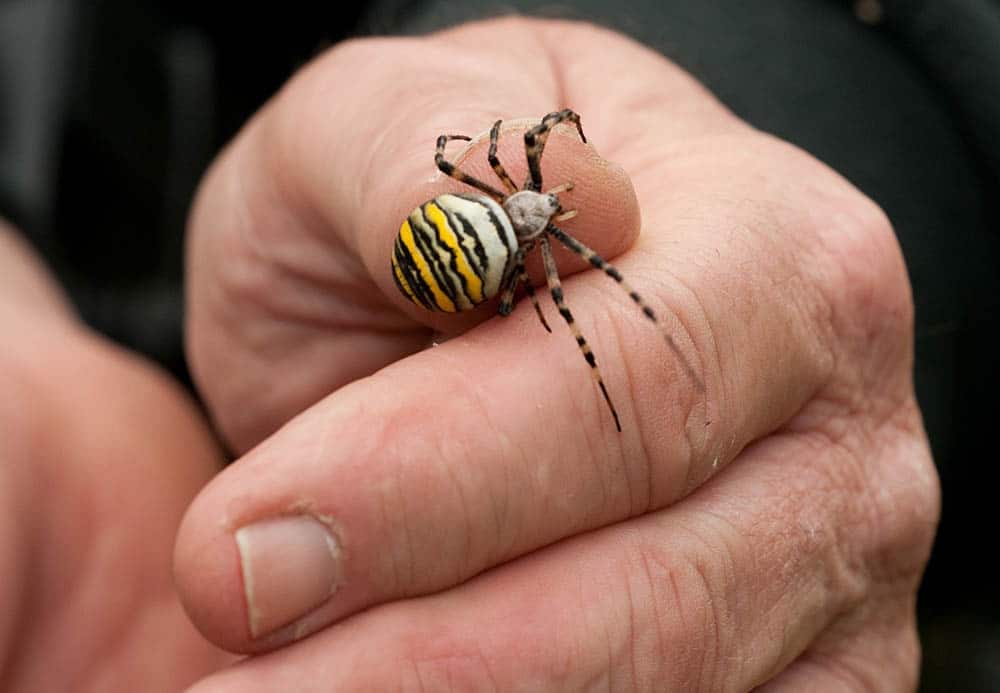The Wasp Spider is a captivating arachnid species that has captivated the curiosity of researchers and nature enthusiasts worldwide. In this article, we delve into the fascinating world of the Wasp Spider, exploring its habitat, physical appearance, web construction, orb-weaving, hunting behaviour, cannibalism, reproduction, behavioural patterns, natural predators, and its interaction with humans.
The Wasp Spider, known scientifically as Argiope bruennichi, belongs to the family Araneidae. It is renowned for its striking appearance, characterised by its black and yellow markings, which often resemble the colouration of wasps. This mimicry serves as a defence mechanism, deterring potential predators from attacking. Found in various regions across Europe, Asia, and North America, this arachnid has managed to establish itself in diverse habitats.
Habitat and Distribution
The Wasp Spider is widely distributed across Europe, ranging from the Mediterranean to Scandinavia. It can also be found in parts of Asia and North America. This adaptable arachnid thrives in a variety of environments, including meadows, grasslands, gardens, and sand dunes. Its preference for open spaces with abundant vegetation makes it a frequent visitor to gardens and agricultural areas.
Physical Appearance
The Wasp Spider exhibits sexual dimorphism, with females being significantly larger than males. Females have a robust abdomen adorned with the characteristic black and yellow markings, while males display a more slender and subdued appearance. The colouration serves as a warning to potential predators, signalling their venomous nature. These distinctive markings also play a role in courtship behaviour, where males approach females cautiously to avoid becoming a meal themselves.

Web Construction and Hunting Behavior
One of the most remarkable aspects of the Wasp Spider is its web-weaving abilities. They construct large, orb-shaped webs that serve as effective traps for unsuspecting insects. The silk produced by Wasp Spiders is known for its strength and elasticity, making it ideal for ensnaring prey. Their webs often feature a prominent zig-zag pattern, called stabilimenta, at the centre. While the exact purpose of this pattern is not fully understood, it is believed to play a role in attracting prey or warning larger animals to avoid the web.
Orb Weaving: A Masterpiece of Design
The orb web constructed by the Wasp Spider is a masterpiece of architectural design. It consists of a series of radiating lines that form the framework of the web, with a sticky spiral spun from the centre outward. This spiral is meticulously crafted to capture flying insects. The Wasp Spider is known for its precision and efficiency in building these intricate webs, ensuring maximum success in catching its prey.
Hunting Behavior and Cannibalism
Once the web is complete, the Wasp Spider positions itself at the hub or near the edge, waiting for vibrations that indicate an insect has been trapped. Upon detecting prey, the spider rushes to immobilise its catch using its venomous bite. Interestingly, the Wasp Spider is not only skilled at capturing other insects but can also be cannibalistic in certain situations. In some cases, a female may consume a male that approaches her for mating. This behaviour, known as sexual cannibalism, is believed to provide the female with essential nutrients to support egg production.
Reproduction and Life Cycle
The Wasp Spider’s mating behaviour is an intriguing spectacle. Male spiders must approach females with extreme caution, as they risk becoming a meal if the female is not receptive to their advances. If successful, the male will deposit his sperm into the female’s genital opening. After mating, the female constructs a silk egg sac in which she lays hundreds of eggs. She then guards the sac diligently, protecting her future offspring until they hatch. Spiderlings undergo several moults as they develop into adults, and their striking colouration becomes more apparent as they mature.
Behavioural Patterns
Wasp Spiders are primarily solitary creatures, though some species exhibit social behaviour under specific conditions. They are diurnal hunters, meaning they actively hunt during the day, using their keen eyesight to detect movement in their surroundings. Unlike some other spiders that use a wait-and-ambush strategy, Wasp Spiders are known to patrol their webs actively and respond quickly to potential prey.
Natural Predators
Despite their venomous bite and warning colouration, Wasp Spiders face threats from various predators. Birds, larger spiders, and certain insects are among the primary predators that pose a risk to these arachnids. To avoid becoming prey, Wasp Spiders rely on their ability to flee or employ their silk to descend quickly to safety.
Interaction with Humans
The presence of Wasp Spiders in ecosystems contributes to the control of insect populations, making them beneficial for agriculture and gardens. They play a crucial role in maintaining the balance of local ecosystems by controlling insect pest populations. Unfortunately, their resemblance to wasps can lead to misconceptions and irrational fears, causing some people to unnecessarily kill these harmless spiders.

Conservation Status
As of now, the Wasp Spider is not considered an endangered species. However, like many other wildlife species, it faces threats from habitat destruction and climate change. It is crucial to raise awareness about the significance of these spiders in the ecosystem and implement conservation measures to ensure their continued survival.
Conclusion
The Wasp Spider’s unique appearance, intricate web-weaving abilities, hunting behaviour, and occasional cannibalism make it a captivating subject for researchers and nature enthusiasts alike. Its mimicry of wasps and its hunting strategies showcase the wonders of adaptation in the natural world. By understanding and appreciating these remarkable creatures, we can foster a greater sense of respect and coexistence with the diverse life forms that share our planet.
Additional Resources
Sam loves to learn about animals and their habitats. He has been a nature lover from a very young age, and has been writing papers and articles about wildlife for as long as he can remember.
